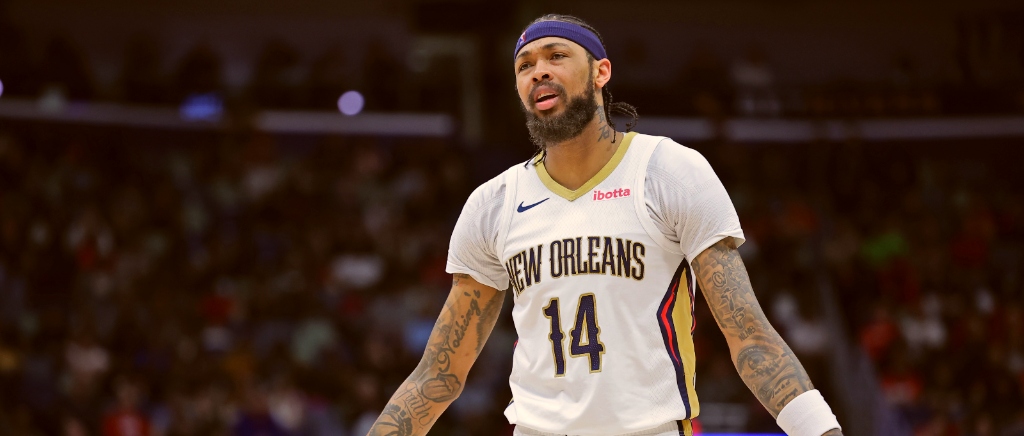Seemingly every discussion of what a team is doing this offseason eventually shifts to “the apron.” The new CBA’s harsh penalties and restrictions for teams that go above certain thresholds went into effect this summer, and teams have been frantically trying to dodge the dreaded second apron — and, if they can, get under the first apron and/or tax as well.
We’ve seen the Warriors, Nuggets, and Clippers all let big names leave this summer in order to avoid the apron, and it’s clear teams just aren’t willing to risk their future flexibility (and the tax costs) of being a second apron team without being in a position like Boston, which are spending a ton of money and are heavy title favorites. It’s frustrating for fans to see teams willingly breaking up contenders, especially with a gigantic TV deal on the way, and players are quickly learning the full ramifications of the apron system they agreed to and how it will impact what offers are out there for them. As of now, 17 teams are hard capped at either the first or second apron due to the many mechanisms that can trigger that, from aggregating salaries to making a sign-and-trade to using certain exceptions.
The list of teams that are hard capped:
$178.1M- 1st Apron
– Atlanta (sign-and-trade)
– Brooklyn (sign-and-trade)
– Charlotte (sent out cash)
– Chicago (non- tax ML)
– Dallas (sign/trade |Non-tax ML)
– Golden St. (sign/trade | Non-tax ML)
– Houston (biannual/prior TE)
– LA…— Bobby Marks (@BobbyMarks42) July 8, 2024
The hard cap mechanisms, combined with the restrictions for those that end up as apron teams, have caused teams to be far more cautious with the money they’re handing out, thinking not only about where they’ll be this year, but down the line as well with the enhanced repeater penalties. The unfortunate part of this is that NBA players are about to get a rude awakening in the form of a shift in how teams value players and how much more protective they are going to be about giving out full max deals, especially to veterans. We’re still going to see really good young players get their max rookie extensions, with Franz Wagner as the latest example, but players with 8+ years of service are going to find that the definition of a max player is about to change.
Paul George detailed the lengthy, tense negotiations he had with the Clippers before ultimately getting his 4-year max from the Sixers. The Clippers initially offered him two years, $60 million before eventually getting to the 3/150 deal they gave Kawhi Leonard, but George was concerned he’d be traded and wanted either a no-trade or a 4-year max, which they weren’t willing to offer. As such, he left for Philly, but they are a rare contender with max cap space and the incentive to add a superstar into that space. Those don’t come around often, and teams are suddenly extremely wary of paying a player max money when that player doesn’t consistently deliver max production, or are older and might taper off towards the end of a deal.
Brandon Ingram might end up as the first example of a guy who is going to be squeezed a bit by the NBA’s new definition of a max player, as the Pelicans star wing is entering the final year of his deal in New Orleans and is very much on the trade block. The problem the Pelicans and Ingram are finding is not that teams don’t see Ingram as a good player, but there aren’t many (or, as of this moment, any) that view him as a great enough player to give him the max deal he’s seeking.
Ingram will be at nine years of service by the time his contract runs up, and thus will be eligible for a 5-year, ~$245 million deal with a team re-signing him or a 4-year, ~$182 million deal for a new team in free agency. In the past, he likely would’ve gotten that from someone, as he’s an extremely talented wing scorer who has averaged 23.1 points, 5.5 rebounds, and 5.2 assists per game on 47.2/37.2/84.7 shooting splits over his five seasons in New Orleans. That used to be the kind of production that could get you the max from someone, even when you’ve had a checkered injury history like Ingram. But in the new world of the apron, teams are thinking twice about handing out those kinds of long-term, big money deals.
The timing for Ingram hitting the trade market hasn’t helped his case, as he had a woeful playoff series against Oklahoma City, calling into question his ability to be a highly impactful playoff performer — even though two years ago, he was sensational in a 6-game loss to the Suns. It’s possible someone decides he’s worth it, as all it ever takes is one team, but it also wouldn’t surprise me if Ingram becomes the first member of the NBA’s new upper middle class, as the financial value of a very good (but somewhat flawed) player gets redefined. We’ve seen a major shift in how teams allocate contracts as top players command the max and leave little room for mid-tier deals, but as the apron restrictions put teams in a bind, we could see a return of that middle class contract. Unfortunately for the players, that’s not because the lower tier of deals will shrink, but because the max tier is likely to get squeezed. So for someone like Ingram, instead of a 4/182 offer, perhaps it’s 4/140 that ends up on the table, as teams look to create a bit more exclusivity when it comes to who is considered a max star and expand the tier just below.
It’s not just that you narrow your margin for error on the roster construction side with max deals, but as the Bulls can attest with Zach LaVine, trading a player on a max who hasn’t performed to that level has become increasingly difficult as well. The real question is how quickly players and agents are willing to accept what teams seem to want to create as the new normal on the market. The reality of the new CBA, which the NBPA agreed to, is that a hard cap is essentially here.
Teams and star players have always had discussions about how to best build a team within the salary cap structure, with plenty of examples of front offices asking stars to take a bit less to free up money to add more talent around them (the Big 3 in Miami serves as a prime example). However, it seems that will be even more prevalent in this new world, and teams are going to draw firmer lines in the sand than ever before when it comes to contracts, both in length and amount. We saw it with Paul George in L.A., or LeBron James considering a big cut to free up the mid-level and ultimately taking just under the max to stay out of the second apron. Jamal Murray’s extension talks with Denver, by all accounts, aren’t going as smoothly as some expected for a similar reason. Teams are pushing harder to get players to accept a little less in order to create that flexibility, because teams can no longer just spend their way out of a mistake.
If this ends up being the case, there would be considerable and understandable pushback from players and agents. But at the very least, their options for getting paid are going to be much more limited. There’s still plenty of money to be made in the NBA’s upper middle class, but that “max player” title figures to become much more exclusive in the near future. Brandon Ingram might be the first test case, but he certainly won’t be the last to be hit with a new reality check.







